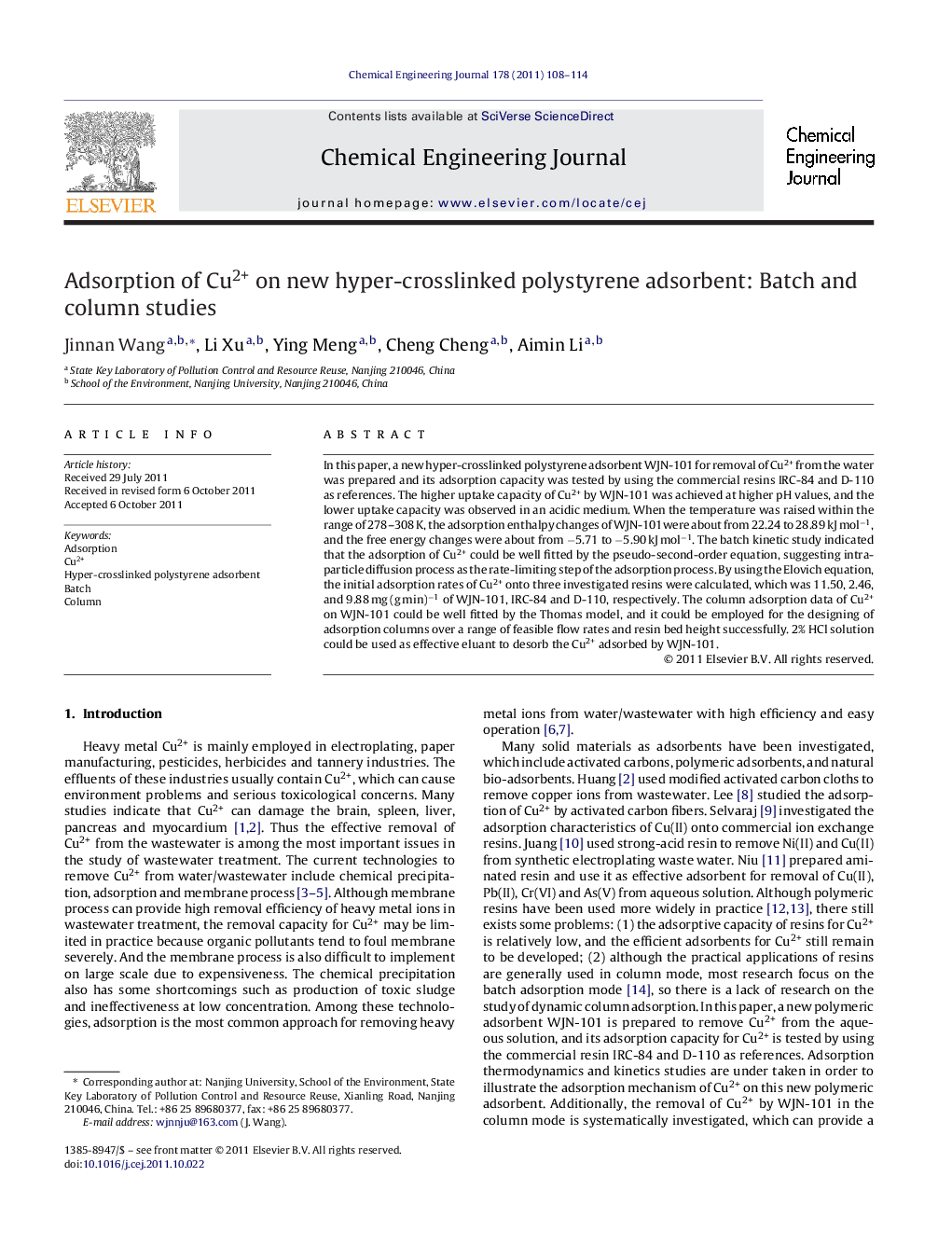| Article ID | Journal | Published Year | Pages | File Type |
|---|---|---|---|---|
| 150451 | Chemical Engineering Journal | 2011 | 7 Pages |
In this paper, a new hyper-crosslinked polystyrene adsorbent WJN-101 for removal of Cu2+ from the water was prepared and its adsorption capacity was tested by using the commercial resins IRC-84 and D-110 as references. The higher uptake capacity of Cu2+ by WJN-101 was achieved at higher pH values, and the lower uptake capacity was observed in an acidic medium. When the temperature was raised within the range of 278–308 K, the adsorption enthalpy changes of WJN-101were about from 22.24 to 28.89 kJ mol−1, and the free energy changes were about from −5.71 to −5.90 kJ mol−1. The batch kinetic study indicated that the adsorption of Cu2+ could be well fitted by the pseudo-second-order equation, suggesting intra-particle diffusion process as the rate-limiting step of the adsorption process. By using the Elovich equation, the initial adsorption rates of Cu2+ onto three investigated resins were calculated, which was 11.50, 2.46, and 9.88 mg (g min)−1 of WJN-101, IRC-84 and D-110, respectively. The column adsorption data of Cu2+ on WJN-101 could be well fitted by the Thomas model, and it could be employed for the designing of adsorption columns over a range of feasible flow rates and resin bed height successfully. 2% HCl solution could be used as effective eluant to desorb the Cu2+ adsorbed by WJN-101.
► A new resin for removal of Cu2+ from water was prepared and characterized. ► This new resin had high sorption capacity and reuse potential. ► The sorption mechanism, thermodynamics and dynamic were illustrated. ► Use Thomas model to predict column sorption curves successfully.
